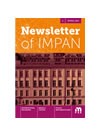On the Law of Large Numbers for Nonmeasurable Identically Distributed Random Variables
Volume 61 / 2013
Abstract
Let be a countable infinite product \varOmega_{1}^{\mathbb N} of copies of the same probability space \varOmega_1, and let \{ \varXi_n \} be the sequence of the coordinate projection functions from \varOmega to~\varOmega_1. Let \varPsi be a possibly nonmeasurable function from \varOmega_1 to \mathbb R, and let X_n(\omega) = \varPsi(\varXi_n(\omega)). Then we can think of \{ X_n \} as a sequence of independent but possibly nonmeasurable random variables on \varOmega. Let S_n = X_1+\cdots+X_n. By the ordinary Strong Law of Large Numbers, we almost surely have E_*[X_1] \le \liminf S_n/n \le \limsup S_n/n \le E^*[X_1], where E_* and E^* are the lower and upper expectations. We ask if anything more precise can be said about the limit points of S_n/n in the nontrivial case where E_*[X_1] < E^*[X_1], and obtain several negative answers. For instance, the set of points of \varOmega where S_n/n converges is maximally nonmeasurable: it has inner measure zero and outer measure one.









